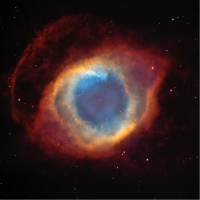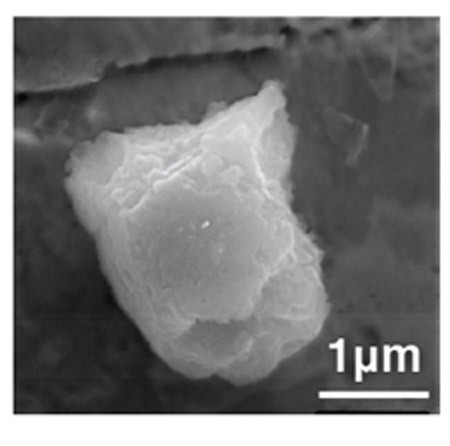Origin of meteoritic stardust unveiled by a revised proton-capture rate of oxygen-17

A long-standing puzzle on the origin of stardust recovered from meteorites has finally been solved thanks to the identification of the effect of a nuclear reaction in the composition of stardust grains.
During their lifetime, stars with masses four to eight times the Sun’s blow off their outer layers generating a nebula around them full of stardust and grains. The chemical composition of such dust and grains reveals important clues on the nuclear processes that have contributed to their formation.
The Solar System is believed to have formed from such a nebula. And while most of the original dust was destroyed to make up new rocks and planets, including the Earth, a small fraction survived the destruction process. This special dust, recovered from meteorites, can be used to trace the evolution of the nebula from which the planets were born and to understand the physical processes inside the stars where the grains formed. But tracing the grains to specific types of stars turned out to be surprisingly difficult.

While intermediate mass stars (roughly six times heavier than the Sun) are seen by infrared telescopes to produce huge amounts of dust, however, grains recovered from the Solar System meteoritic record so far did not seem to match the composition expected from these stars.
A new study, led by Maria Lugaro from Konkoly Observatory (MTA-CSFK) and published in Nature Astronomy, solves this problem by identifying, in the make-up of some meteoritic stardust grains, the effect of the nuclear reactions that occur in these particular stars.
The breakthrough was possible thanks to experiments carried out at the Laboratory for Underground Nuclear Astrophysics (LUNA). LUNA observed that the probability for the fusion of protons and 17O (a heavier type of the oxygen we breathe) to occur is twice as large as previously thought (Bruno et al., Physical Review Letters, 117, (2016) 142502). This effect is clearly observed in some stardust grains, resolving the mystery of the missing grains from intermediate-mass stars.
LUNA is currently the only underground accelerator worldwide specifically devoted to the study of nuclear reactions of astrophysical interest. The facility is hosted by the Laboratori Nazionali del Gran Sasso of the Italian Institute for Nuclear Physics (INFN) and is located under more than one kilometer of rocks.
Maria Lugaro says: “The long-standing question of the missing dust was making us very uncomfortable: it undermined what we know about the origin and evolution of dust in the Galaxy. It is a relief to have finally identified this dust thanks to the renewed LUNA investigation of a crucial nuclear reaction.”
“The results of this study prove once again the importance of precise and accurate measurements in the laboratory of the nuclear reactions that take place in stars – says Prof Marialuisa Aliotta, who led the UK team of LUNA for the PRL study – It is a great satisfaction to know that we have contributed to solving a long-standing puzzle on the origin of some stardust grains.”
LUNA is an international collaboration, involving about 40 scientists from 14 institutions in Italy, Germany, Hungary and the UK. The Collaboration Spokesperson is Prof Paolo Prati, from the University of Genova, Italy.

